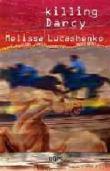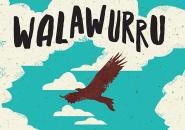AustLit
Latest Issues
AbstractHistoryArchive Description
'Angry young Koori Darcy Mango is on parole, and looking for his mob in Northern New South Wales. Befriending the Menzies family wasn't at all what he had in mind, but then neither was the old house hidden in the bush near Desperation Creek. Why does the camera from the house take pictures of the past? It's Darcy's fate to find out.' (Source: UQP website)
Notes
-
Dedication: For Bill, who dreamt the camera.
-
Epigraph: I am your blundering kind companion.
I am your home that keeps out bitter weather.
I am the perilous slow deposit of time's wisdom.
You are my threat, my murder. And yet remember,
I am yourself. Come, let us live together. (Judith Wright, Flesh)
Publication Details of Only Known VersionEarliest 2 Known Versions of
Other Formats
- Sound recording.
Works about this Work
-
Flourishing in Country : An Examination of Well-Being in Australian YA Fiction
2020
single work
criticism
— Appears in: Jeunesse : Young People, Texts, Culture , Winter vol. 12 no. 2 2020; (p. 15-39) 'This article is the result of a collaboration between two academics—one Indigenous and one non-Indigenous—to investigate the representation of Indigeneity in two contemporary YA novels. Melissa Lucashenko's killing Darcy is narrated by multiple Indigenous and non-Indigenous characters, whereas Clare Atkins's Nona and Me is told from the perspective of a white character and explores her relationship with an Indigenous community. Cultural identity forms a significant part of well-being, and this article investigates versions of sufficient well-being. It explores how the novels represent flourishing subjects—both Indigenous and non-Indigenous—in the context of Australia as it struggles to come to terms with its colonial past and demonstrates how cognitive mapping replaces damaging colonial assumptions about Indigenous Peoples with a model of overcoming.' (Publication abstract) -
Serious Issues for Young Readers
BlackWords : Serious Issues for Young Readers
2015
single work
criticism
— Appears in: The BlackWords Essays 2015; (p. 8) The BlackWords Essays 2019;In this essay Heiss discusses Indigenous-authored works that are targeted for upper-primary and young adult readers, that address issues of identity, self esteem, relationships and peer-group pressure that are available for both educators and students. Heiss recommends that these works discussed in this essay, will not only engage young Indigenous students, but also non-Indigenous students and other readers with a sense of sameness in terms of coming of age, facing friendships, and the growing pains that all teenagers face.
-
Scanners
2010
single work
review
— Appears in: SF Commentary : The Independent Magazine About Science Fiction , August no. 80 2010; (p. 67)
— Review of The Centurion's Empire 1990 single work novel ; Cold Iron 1998 single work novel ; Killing Darcy 1998 single work novel -
y
 Death, Gender and Sexuality in Contemporary Adolescent Literature
New York (City)
:
Routledge Taylor & Francis Group
,
2009
Z1790145
2009
single work
criticism
Death, Gender and Sexuality in Contemporary Adolescent Literature
New York (City)
:
Routledge Taylor & Francis Group
,
2009
Z1790145
2009
single work
criticism
-
'There's a Black Boy Dead and a Migloo Holding a Gun' : Death, Aboriginality and History in Australian Adolescent Literature
2009
single work
criticism
— Appears in: Papers : Explorations into Children's Literature , vol. 19 no. 1 2009; (p. 5-16) 'In 'Preying on the Past: Contexts of Some Recent Neo-Historical Fiction', Peter Pierce argues that, over the last five or so decades, Australian historical fiction has turned away from 'unconstrained and idealistic affirmations about Australia's future' to empathise instead with those figures in the historical landscape who were previously marginalised: 'victims of imperialism, patriarchy, racism, capitalism' (p.307).
This trend is particularly applicable to historical literature for younger readers, which now often tries to renegotiate history by providing a counterpoint to the metanarratives of the past (Stephens 2003, xii-xiii). Reflecting and responding to developments in the disciplines of historiography and, more generally, the humanities, texts in this genre are representative of the attempt to interrogate monolithic versions of Australian history - often called the 'three cheers' view - in which positivity, achievement and the peaceful settlement of the nation are key themes.
At issue in these novels is thus the redressing of past wrongs, particularly with respects to the violent aspects of colonisation when so many members of the Indigenous population either died or were forcibly displaced. Each of the three adolescent novels I focus upon in this paper - Melissa Lucashenko's Killing Darcy (1998), Gary Crew's No Such Country (1991) and Mark Svendsen's Poison Under Their Lips (2001) - is equally idiosyncratic in its approach to narrativising Australia's problematic colonial past' (Author's abstract).
-
[Review] Killing Darcy
1998
single work
review
— Appears in: Reading Time : The Journal of the Children's Book Council of Australia , August vol. 42 no. 3 1998; (p. 40)
— Review of Killing Darcy 1998 single work novel -
[Review] Killing Darcy
1998
single work
review
— Appears in: Magpies : Talking About Books for Children , May vol. 13 no. 2 1998; (p. 36)
— Review of Killing Darcy 1998 single work novel -
Scanners
2010
single work
review
— Appears in: SF Commentary : The Independent Magazine About Science Fiction , August no. 80 2010; (p. 67)
— Review of The Centurion's Empire 1990 single work novel ; Cold Iron 1998 single work novel ; Killing Darcy 1998 single work novel -
Teen Beat
1998
single work
review
— Appears in: The Courier-Mail , 2 May 1998; (p. 9)
— Review of Rift 1998 single work novel ; Killing Darcy 1998 single work novel -
Chilling Tale
1998
single work
review
— Appears in: Australian Book Review , June no. 201 1998; (p. 42-43)
— Review of Rift 1998 single work novel ; Killing Darcy 1998 single work novel -
Performances of Colour : Narratives of Passing in Settler-Society Texts
2004
single work
criticism
— Appears in: Seriously Playful : Genre, Performance & Text 2004; (p. 77-84) In this paper, Bradford focuses on settler-society texts involving characters who move across the psychological and physical boundaries dividing races. -
'Oh How Different!' : Regimes of Knowledge in Aboriginal Texts for Children
2003
single work
criticism
— Appears in: Lion and the Unicorn , April vol. 27 no. 2 2003; (p. 199-217) -
Transformative Fictions : Postcolonial Encounters in Australian Texts
2003
single work
criticism
— Appears in: Children's Literature Association Quarterly , Winter vol. 28 no. 4 2003-2004; (p. 195-202) -
'There's a Black Boy Dead and a Migloo Holding a Gun' : Death, Aboriginality and History in Australian Adolescent Literature
2009
single work
criticism
— Appears in: Papers : Explorations into Children's Literature , vol. 19 no. 1 2009; (p. 5-16) 'In 'Preying on the Past: Contexts of Some Recent Neo-Historical Fiction', Peter Pierce argues that, over the last five or so decades, Australian historical fiction has turned away from 'unconstrained and idealistic affirmations about Australia's future' to empathise instead with those figures in the historical landscape who were previously marginalised: 'victims of imperialism, patriarchy, racism, capitalism' (p.307).
This trend is particularly applicable to historical literature for younger readers, which now often tries to renegotiate history by providing a counterpoint to the metanarratives of the past (Stephens 2003, xii-xiii). Reflecting and responding to developments in the disciplines of historiography and, more generally, the humanities, texts in this genre are representative of the attempt to interrogate monolithic versions of Australian history - often called the 'three cheers' view - in which positivity, achievement and the peaceful settlement of the nation are key themes.
At issue in these novels is thus the redressing of past wrongs, particularly with respects to the violent aspects of colonisation when so many members of the Indigenous population either died or were forcibly displaced. Each of the three adolescent novels I focus upon in this paper - Melissa Lucashenko's Killing Darcy (1998), Gary Crew's No Such Country (1991) and Mark Svendsen's Poison Under Their Lips (2001) - is equally idiosyncratic in its approach to narrativising Australia's problematic colonial past' (Author's abstract). -
y
 Death, Gender and Sexuality in Contemporary Adolescent Literature
New York (City)
:
Routledge Taylor & Francis Group
,
2009
Z1790145
2009
single work
criticism
Death, Gender and Sexuality in Contemporary Adolescent Literature
New York (City)
:
Routledge Taylor & Francis Group
,
2009
Z1790145
2009
single work
criticism
Awards
- 1998 shortlisted Aurealis Awards for Excellence in Australian Speculative Fiction — Young Adult Division — Best Novel
- 1998 winner Royal Blind Society Awards — Aurora Prize
- Coast,






